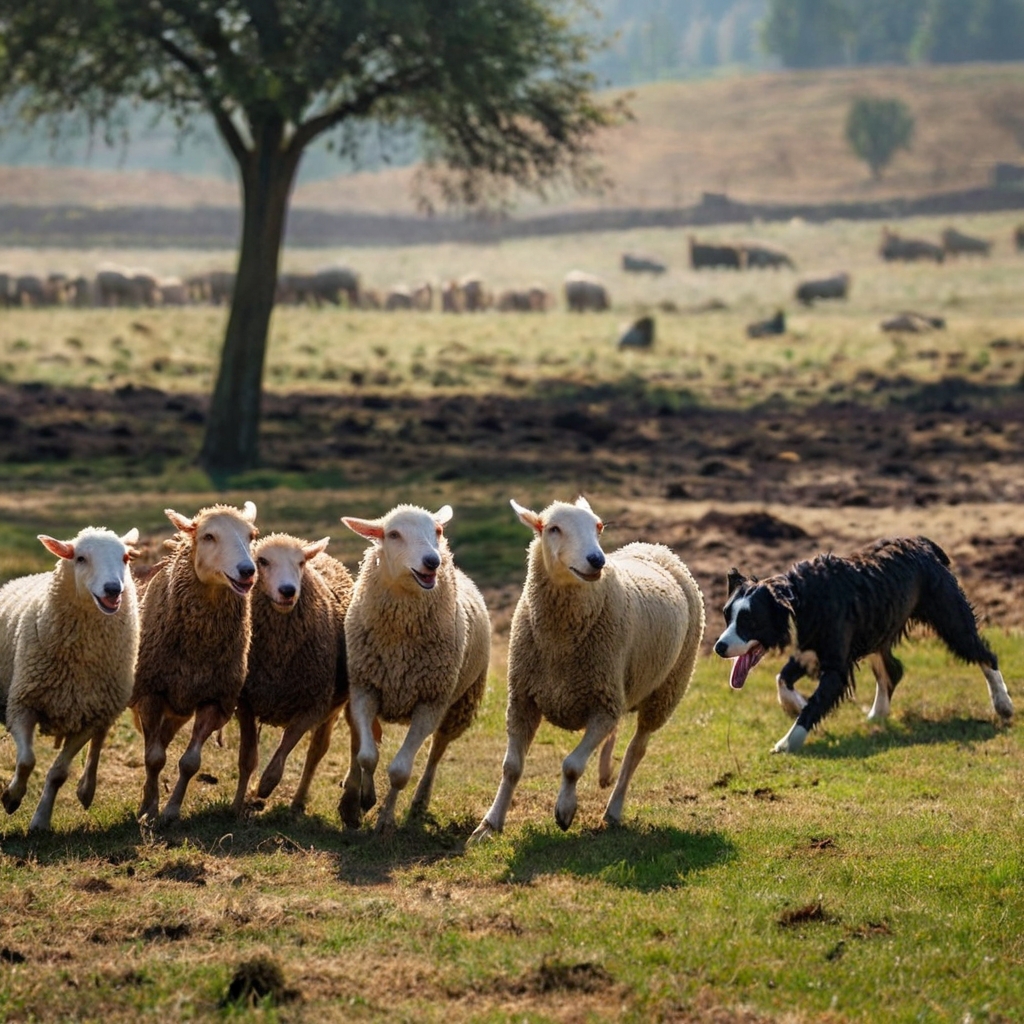As a seasoned dog owner and enthusiast, I’ve had the privilege of delving into the world of herding, and I must say, it’s a fascinating realm that’s not only entertaining but also incredibly rewarding. Herding, also known as stock work or sheep herding, is an ancient practice that involves training a dog to manage and move a group of animals, usually sheep, cattle, or goats, from one location to another. This complex task requires a deep understanding of canine behavior, animal psychology, and the intricate dynamics of the human-animal bond.
Introduction to Herding
My journey into the world of herding began when I first acquired my own dog, a Border Collie named Max. As I soon discovered, Max had an innate instinct to herd, and it wasn’t long before I found myself seeking out the expertise of seasoned herders to help me understand and nurture this natural ability. Through consultations with specialists in the field, I gained a profound appreciation for the art of herding and the incredible skills that both dogs and handlers must possess to excel in this discipline.
Understanding the Basics of Herding
The Role of the Herding Dog
A herding dog, also referred to as a working dog or stock dog, plays a crucial role in the herding process. Bred specifically for their intelligence, athleticism, and strong work ethic, these dogs are capable of learning and executing complex commands, navigating challenging terrain, and adapting to diverse situations. Through extensive training and socialization, a herding dog develops the skills necessary to effectively manage and move stock, while also responding to the cues and directions of its handler. As I observed Max’s interactions with the sheep, I marveled at the way he seemed to intuitively understand the dynamics of the flock, using his innate herding instincts to guide them effortlessly across the pasture.
Types of Herding
There are several types of herding, each with its unique characteristics and challenges. Some of the most common types include:
- Pasture management: This involves moving stock to specific areas of the pasture to optimize grazing and maintain the health of the land.
- Driving: This type of herding requires the dog to move stock over long distances, often to a new location or to a market.
- Gathering: In this type of herding, the dog must collect stock from a dispersed area and bring them to a central location.
- Sorting: This involves separating stock into different groups, often based on factors such as age, sex, or breed.
- Penning: In this type of herding, the dog must move stock into a enclosed area, such as a pen or corral, for vaccinations, weighing, or other management tasks.
These different types of herding require a range of skills and strategies, and the best herding dogs are those that can adapt to various situations and tasks.
Training a Herding Dog
Training a herding dog is a nuanced and multifaceted process that requires patience, consistency, and a deep understanding of canine behavior and learning theory. A good herding dog must be able to respond to a range of commands, from basic obedience cues to more complex herding commands, such as “come bye” and “come on.” The training process typically begins with basic obedience training, followed by introduction to stock and gradual progression to more complex herding tasks. As I worked with Max, I saw firsthand the importance of positive reinforcement, clear communication, and consistent expectations in developing a strong and effective herding partnership.
Benefits of Herding
Herding offers a range of benefits for both dogs and handlers, from improved physical and mental health to enhanced socialization and bonding. For dogs, herding provides an outlet for their natural instincts and energy, while also challenging them to think critically and problem-solve. For handlers, herding offers a unique opportunity to develop trust, communication, and teamwork with their dogs, while also experiencing the rewards of working with animals and being outdoors. As I reflected on my own experiences with Max, I realized that herding had brought us closer together, fostering a deeper understanding and appreciation for each other’s strengths and weaknesses.
Conclusion
In conclusion, herding is a complex and multifaceted discipline that requires a deep understanding of canine behavior, animal psychology, and the human-animal bond. Through my experiences with Max and consultations with experts in the field, I’ve gained a profound appreciation for the art of herding and the incredible skills that both dogs and handlers must possess to excel in this discipline. Whether you’re a seasoned herder or just starting out, the world of herding offers a rich and rewarding journey that’s full of challenges, opportunities, and joy. So, if you’re wondering what is herding, I hope this article has provided you with a comprehensive and insightful introduction to this fascinating world, and I encourage you to explore further and discover the many wonders that herding has to offer.
Additional Resources
For those interested in learning more about herding, I recommend the following resources:
- The International Sheep Dog Society: A comprehensive resource for herding enthusiasts, offering information on breeds, training, and competitions.
- The American Kennel Club: A trusted organization that provides information on herding breeds, training, and events.
- The Herding Dog Club of America: A community-driven organization that promotes the sport of herding and provides resources for handlers and dogs.
These resources offer a wealth of information and guidance for those looking to explore the world of herding, and I encourage you to visit them to learn more about this fascinating discipline.
